Grow Uperion: Gamification in Business
Welcome to the definitive guide to Workplace Gamification in 2022.
Here, we go over the most important aspects of gamification and give you theoretical and practical tips for using gamified content in your organisation. If you want to learn more about the mechanics of gamification, the psychology behind it, and its practical applications such as onboarding, training, and everyday tasks, stay with us. Curious about how gamification can increase sales and revenue, boost employee motivation and job satisfaction, and contribute to a great company culture?
What is gamification?
Chapter #1
Gamification. A trendy word in recent years that brings to mind distracting games that supposedly help people learn new information or work more efficiently. I know what you are thinking - how can games increase employee productivity? You may not know this, but gamified education and work experience motivate people and not only make them better at their jobs, but also more passionate about them - that leads to achieving business goals and boosting the staff’s connection with the company.

Paweł Tkaczyk
According to, Paweł Tkaczyk, specialist in modern marketing, storytelling branding and author of a respected book on gamification, [link] users are not motivated by status, access, power and stuff. Different kinds of gamification provide these kinds of prizes to boost team morale and productivity.
Think I’m exaggerating? Let me walk you through it.
Definition of Gamification.
First things first. To understand the concept, you need to know its origin. As a matter of fact, Nick Pelling coined the word "gamification" in 2002 as part of his consultancy firm. Marriam-Webster dictionary describes it as “the process of adding games or game like elements to something (such as a task) so as to encourage participation (verb form: to gamify).” Essentially, the concept behind gamification is to employ several proven components of games to inspire increased participation.
On the one hand, gamification is the use of game-specific mechanisms (such as points, levels, prizes, or) to influence the behaviour of people outside the game environment. On the other, gamification can be thought of as the injection of fun into activities that are not necessarily entertaining - like writing reports or completing routine tasks.
Gamification allows the employees to upskill, improve their performance and increase overall engagement - and what company does not want highly motivated and enthusiastic employees?

Types of gamification
To understand the underlying ideas and benefits of gamification in the workplace, I would like to point out the two basic types of gamification - structural and content gamification.
Structural gamification - Structural gamification occurs when game elements are inserted into the framework of a program, but the two are not connected. The game material is presented independently of the actual content, without interrupting the existing information. Through the use of progress bars, unlocking content levels, or badges for completed tasks, even completing a registration on Linkedin can feel very fulfilling.
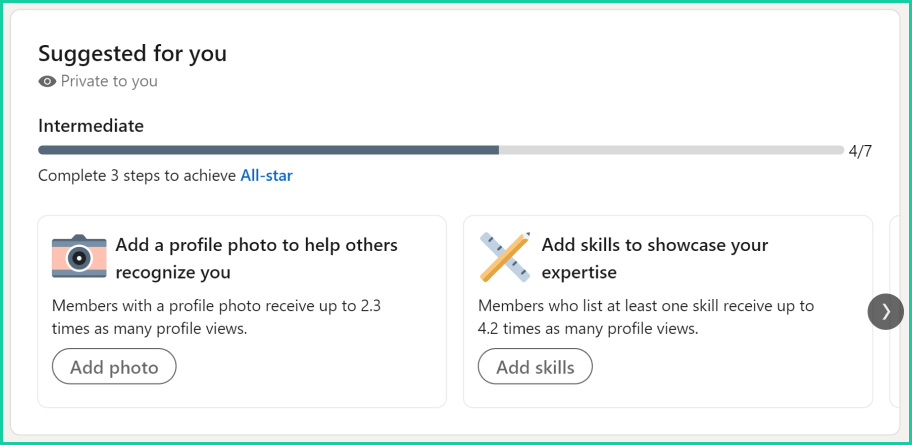
The same applies to Duolingo - the fact that you receive a badge after completing certain language learning tasks does not affect the content itself, but makes the learning process even more interesting.
Features of structural gamification include:
- Badges and lead boards
- Time limits
- Competition with colleagues
- Progress bars
Content gamification - When the game aspects on your website/app/training are essentially tied to the working/learning material, it is called content gamification. The user gathers knowledge and performs the required activities in an unconventional way in a gamified experience.
A good illustration would be the gamification of the report writing process - although the task is daunting, it becomes more attractive when the report must be uploaded to a gamified app or platform that awards points or a badge for achievement.

Features of content gamification include:
- Storyline
- Creative UX design
- Challenges and feedback loops
- Element of randomness
Latest Gamification Trends
Enough talk about theory and definitions. Let us explore the broad areas of gamification trends that can be found in various businesses and sectors.
Brand Marketing Through Gamification
It is possible to make a content marketing campaign more engaging and interactive by incorporating game-based components, such as a progress bar or a reward system after completing a task. Gamification promotes greater interaction between customer and brand! Thanks to it, many companies can provide appealing content to attract customers and increase engagement and conversions.
Virtual Onboarding Made Easy
As new employees need to begin the recruitment and onboarding remotely, we have seen a significant increase in the use of gamification in the onboarding processes. A right remote motivation platform [link do GU] can help companies in a variety of industries to real value to their onboarding procedures. Thanks to leader boards, progress status and challenges between newcomers, new employees can consume training content effectively and with enthusiasm.
Remote Events and Gamification
With the widespread and frequent cancellation of conferences and conventions, many companies have decided to go fully digital. But the truth is that cyber gatherings are hard to focus on and tiring because they lack the bonds that a face-to-face meeting brings. Gamification helps to drive engagement and active participation from attendees while retaining core ideas.
Gamification helping to reduce hospital strains
The healthcare industry is playing a critical role in combating the pandemic. Gamification can aid healthcare workers and shift the emphasis on communication networks for medical experts and patients. . In an attempt to lower hospital and doctors' visits, regular patients can be treated remotely using apps and gamified medical platforms.
Growing - gamification for growth and development
GrowUperion’s understanding of gamification as growalisation - At Grow Uperion, we use gamification as a focus on employee development that leads to the growth of the entire organisation.
#Growalisation stimulates progress, supports the business environment and is mutually beneficial for the employee and the company.
It's about more than just performance and results - giving employees the opportunity to grow mentally, socially, and professionally builds stronger bonds with the company, even in dispersed groups. And thanks to the changing workforce, the entire company changes for the better, too.
Why gamification works?
Chapter #2
The psychology of Gamification
Let us start with a quote.
"Gamification is 75 percent psychology and 25 percent technology," says Gabe Zichermann, one of the authors of the 2011 book Gamification by Design: Implementing Game Mechanics in Web and Mobile Apps. And we are not talking about psychoanalytic, couch psychology here, but practical - grounded in today's world, in business, and in everyday applications.
The interesting thing is that while gamification includes game aspects such as levels, points and leaderboard-based competitions, in reality all of these mechanisms are set up on the principles of the human mind.
Even strategies like using self-determination theory and positive encouragement to increase our desire to repeat a task are pure psychology based on Skinner's operant conditioning theory. In simple words, people can only learn new habits and acquire new skills if they are reinforced or motivated.
You are more likely to keep learning if you feel a connection between a task and a reinforcer, such as a prize (salary, grades, achievements), right? And gamification takes advantage of that by creating a reward system that draws in users.
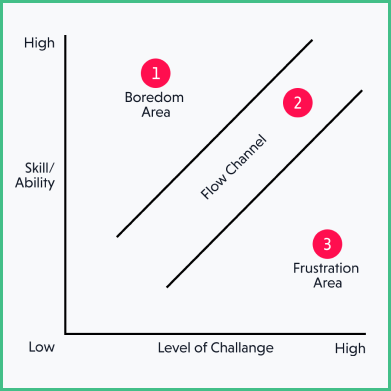
Let’s dig deeper. Welcome Flow theory, one of the most important concepts in gamification. It's simpler than you think. The basic idea is that when you try to master something difficult but manageable, you enter a state of mind, a flow, in which you are simultaneously fascinated, joyful, and eager. Csikszentmihalyi, Hungarian American psychologist, coined the term in 1975 in his research on happiness. He interviewed artists and athletes about their drive to devote time and energy to their passion.
Magnum Pleasure Hunt Across Amsterdam augmented reality experience
He concluded that there are three channels of learning: Boredom, Flow, and Frustration. As task complexity increases to match developing skills, a learner's flow state is likely to be maintained as he or she progresses through a task. If your talents are strong but the challenge is low, you will be bored. If they are too low, you will get frustrated and give up. The idea is that the activity lies between these two areas to maintain interest and challenge over time.
Gamification draws on this theory.
What drives us?
Once we have touched upon up the foundation of psychology behind gamification, now has come the time to ask the question - how is gamification bringing such great results? What is the secret ingredient? Let’s look at the table.
The scholars of University of Crete, Greece found out in 2021 what gamification aspects were the greatest drives for Science Education students. They discovered that among the examined group of pupils whose science tasks were gamified, the most effective game elements involved competitive setup, leaderboards, points, and levels.
These findings suggest that competition, when properly managed, can increase motivation without harmful side effects. As you can see, we are highly motivated by a certain type of game based on the competitive instinct, also known as agon, and gamification takes advantage of this. More on this later but suffice it to say that the Agon type of engagement thrives in games where the priority is to pick a winner and follow certain rules.
It brings us to the point. Is it only about beating each other? So, what exactly makes gamification work?
It is such a powerful tool because to facilitate learning in school, performing work tasks, gaining leadership skills, or achieving personal goals such as weight loss, it takes advantage of four key motivational drives that come from game mechanics, namely the competitive mindset, but also mixed with a reward system, sense of accomplishment, and social spirit.
Competitiveness
We are competitive beings by nature. The truth is that many of us has this inner desire to win and beat other. Besides, competing against others can boost our ambition and productivity. When we observe how others excel in certain tasks, we get inspired them to strive harder and end up with better results. Intrinsically motivated users that enjoy competition will generally achieve higher results.
Reward system
We are also hardwired to respond to both immediate and long-term rewards. Of course, short-term gratification is preferable, which is why gamified awards and recognitions in the form of official praise, badges or voucher's function. Fun fact - we are better programmed to respond to non-monetary incentives such as gifts and recognition. Who doesn't like to collect rewards?
Sense of accomplishment
The feeling of having accomplished something is one of the most powerful psychological motivators. Making progress, improving abilities, and eventually overcoming hurdles are all worthwhile endeavors that help us work and learn more efficiently. Let us face it - would you be excited to collect badges and achievements if there was no challenge involved? Assuming more responsibility at work because you love a good challenge, rather than for a pay rise, are examples of basic intrinsic motivations.
Social spirit
Let’s not forget that as true human being we are social animals that appreciate being a member of a group. Harnessing the need to be a part of community and create social connections in gamification is nothing less powerful than sense of accomplishment. When you see a buddy who excels at a talent or has achieved something outstanding, you are inspired to attain the same level, don’t you?
Magnum Pleasure Hunt Across Amsterdam augmented reality experience
The psychology of Gamification
You seem to understand the complexity and powerful drivers that Gamification uses. But now I am going to interrupt you right here. How can we fully understand this mechanism without learning how people actually respond to gamified content? If you know what type of gamer you are and that you respond to rivalry rather than social interaction, you can select game design patterns to your advantage.
The truth is that there are multiple user types and typologies of players, but we will dig a little deeper into categories developed by Richard Bartle for his Multi-user Adventure games.
Bartle divided people into four four player types depending on how they engage with one another and what they seek to gain from the game – say hello to the Socializer, the Killer, the Achiever and the Explorer.
Which gamification user types sound familiar? Let us find out!

- Killers are eager to take control of others and seek out opponents. They are enthralled with rankings and leaderboards. Their primary purpose is to win, so they concentrate on competition and are irritated by socializers who enjoy games for the sake of developing a community.
- Mastery motivates Achievers. They want to learn new things and better themselves. They desire obstacles to overcome. They are the ones who want to achieve a perfect score in every game, practise or task. Their priorities include being the best in an internal learning system. They also do not seem to mind bragging to others about it.
- Social aspect is the most important driver for Socializers. They want to communicate with other people and form social bonds. They are only interested in gamified systems that help them do this. These players are more concerned about other players and creating internal social networks than with the score.
- Explorers are open to new experiences and discoveries. They are not afraid a positive or negative change, but welcome it. Explorers need games that encourage innovation and alternative ways of thinking. Explorers are a big headache for gamification editors: keeping them happy is really difficult.
So what about you?
And what type of gamer are you? Are you a self-seeker or a social animal? What motivates you to participate in the virtual world? Do you enjoy competing in the personal and professional worlds?
And most importantly: have you ever wondered why are we more successful in playing games than in real life? Think of it this way: in online games, you are more optimistic, you take risks, and you do not give up, even if you fail a boss or a level. You know that you will eventually succeed. In life, uncertainty and lack of belief in possibilities are organic to us.
What if gamification could help change that? Continue to the next sections to see how.
Examples of gamification in life and business
Chapter #3
Explore different types of gamification
Now that you know the psychology behind gamification and the basic ideas, it's time to explore different possible applications in business and everyday life.

Gamification can be used in a variety of sectors - education, entertainment, retail, personal chores, and even the U.S. Army, which uses it for the recruiting process. Game apps like CandyCrush and Among Us have taken the world by storm. 500 million downloads sound impressive, right?
There are also running apps to track your progress, language apps that mix a learning strategy and a point system, and loyalty apps for supermarkets. You can gamify a specific learning objective or corporate training in general. Both business and personal life thrive on gamified content. They can even be used for social and charitable campaigns or to improve road safety and health.
Gamify Your Everyday Life
Health and fun
Let's start with a physical, real-world example of the use of gamification in daily life. Have you ever heard of the musical stairs? Although it started as an experiment whose goal was to encourage people to use the stairs instead of taking the escalator or elevator, it was eventually introduced in New Zealand, Belgium, Italy, China, India, and Sweden.
These piano stairs were designed to aid fitness and promote health. The authors of the experiment built a piano out of a normal staircase so that each step produced a sound. In the end, 66% more people chose the stairs than the elevator or escalator.
Magnum Pleasure Hunt Across Amsterdam augmented reality experience
Another unexpected example of gamification in the healthcare sector can be found in the apps that provide support to sick and recovering patients. To name a few - Asthma Hero and Handcopter.
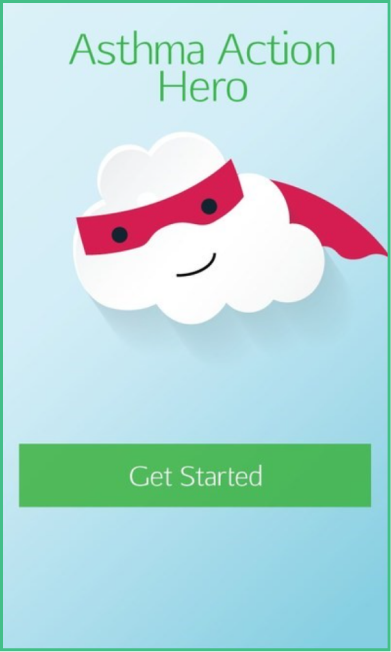
Asthma Hero allows patients to set the frequency of inhaler use and sends reminders accordingly. They can receive points for following instructions and visualize this through a personalized Hero figure.
The Handcopter app is used in the initial phase of rehabilitation of the hands of patients who have suffered a stroke. The patient's hand movements are mapped and visualized by a character who completes tasks in the app.
Budgeting and personal scheduling
Another gamification strategy you may see in everyday life is the use of gamified content in planning and budgeting apps like SmartyPig or Todoist. These applications organize your day and money while being interactive and fun.
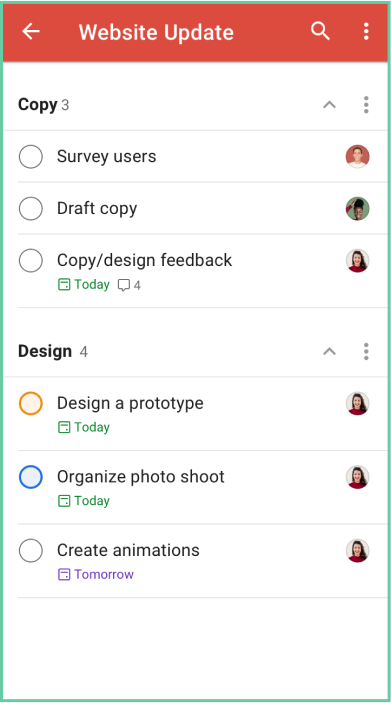
SmartyPig allows you to set aside money for a goal like a new TV or console, with automatic integration with your savings account. The app displays a progress bar illustrating those consistent contributions, no matter how small, make a difference. A sense of satisfaction and financial accomplishment is guaranteed.
Todoist, on the other hand, is perfect for tracking your progress on tasks like housework chores, studying, or a report - you name it! You'll find excellent charts to see your productivity, and you'll be motivated to get karma points for each task and excel in the points system.
Social life
Of course, social media is also making use of gamification. Snapchat, a social network focused on temporary content, offers Streaks to get users to return to the platform daily. Within 24 hours, a Snap (usually a picture or video) must be sent by both sides to keep the Streak alive.

Snapchat's rewards system rewards users for special achievements by displaying small emoji-like badges on their profile. As you can see, even everyday social interaction can be gamified.
Gamify Your Business Goals
By now, you will have realized the immense potential of gamified content in practice.
Now you are ready to dive into the world of gamification in business. What is that exactly, you may ask? The application of game like structure and processes for business goals is called enterprise gamification. You can use it to improve the performance of business processes both internally (productivity, engagement, communication) and externally (marketing, sales and reputation goals).
The truth is hard - marketing goals and driving high revenue are getting harder every year as people turn to interactive platforms like Instagram, YouTube or phone apps and games. It's easier to run ad campaigns in modern portals than in magazines or TV.
This is where gamification elements come into play. To meet the creative and interactive needs of modern consumers, gamified content is what you need. It is far easier to capture attention and ensure conversions when you use story elements and game design, isn't it?
Games
Magnum Pleasure Hunt Across Amsterdam augmented reality experience
- Magnum Pleasure Hunt
Unilever developed a global Internet campaign to market its new Magnum ice cream brand, Magnum Temptation. This 2011 online game resembled Super Mario and allowed players to race through many websites on one platform to collect chocolate pieces in a kind of jump-and-run experience. Meanwhile, players were supposed to hoard candy points, share their score on Facebook, and rank high on leaderboards.
Effects? The game captivated the attention of people around the world with over 7,000,000 participants and a high level of engagement. It was shared en masse on Twitter, Facebook, and blogs. The game's hashtag was one of the top Twitter trends on the day of its release.
Magnum Pleasure Hunt Across Amsterdam augmented reality experience
- Chipotle: A Love Story Game
The Chipotle restaurant chain released a game in 2016 called "A Lover Story," based on a BAFTA award-winning popular animated short film. The story revolved around showing how rivalry between food companies has led to food becoming more processed. In the game you had to combine real ingredients, reducing the use of artificial colors and flavors. At the end you were rewarded with free food, with real-time coupons BOGO that you could collect in the restaurant.
Effects? The game strengthened the brand's overall image of producing natural and organic products. According to Chipotle stats, more than 70% of consumers said they felt the brand used high-quality ingredients, and 65% said the game increased their trust in the company.
Applications

- Uber in Gamification of Business
Uber may seem like an obvious example of unpredictability and surprise in its premium system. Most of the time you know the price for your route, but once you get a 15% discount or make it to a low-traffic time, you feel like a winner. At the same time, Uber is also gamified for drivers that keeps the business going. Are you curious how this works?
Uber awards its drivers badges like "Great Conversation," "Expert Navigation," or "Entertaining Driver," which boosts motivation. In addition, Uber drivers receive new assignments before they have completed the first one - an incentive that's hard to resist. And finally, just before they leave the app, they see a sign indicating how much money is left to earn a certain amount. The next goal, a motivational boost, keeps them on their toes.
Lotteries
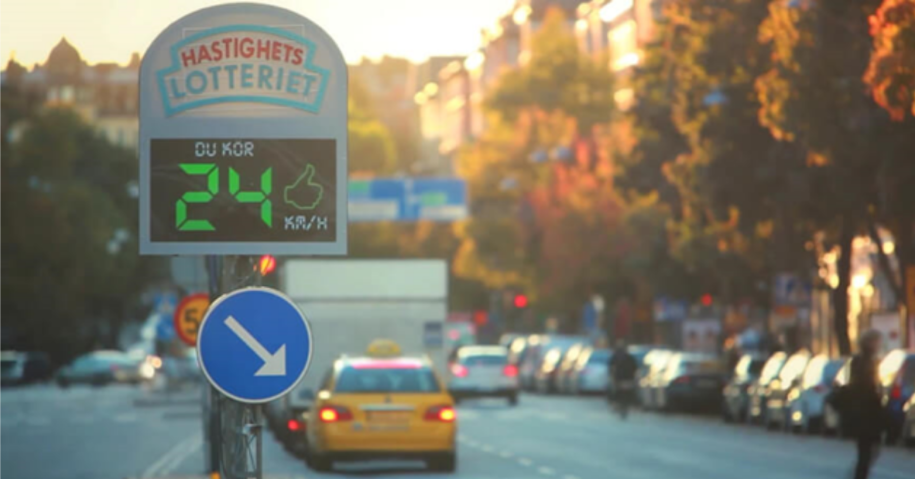
- Speed camera lottery of Social gamification
The campaign, launched by the Swedish National Road Safety Society, was designed to teach drivers motorists to obey speed limits in an entertaining way. The speed of each vehicle was displayed to passing vehicles and recorded by the system.
Those who obeyed the speed limit were also entered into a prize draw. And what's the kicker? They could win a portion of the money collected from speeders. Anticipation, personal responsibility and social pressure work wonders. As you can see, game-based learning turns out to be useful in promoting positive social behaviours.
Loyalty programs
What better way to increase sales and incentivize customers to revisit the brand than to play loyalty programs? However, you need to know that loyalty programs have evolved and no longer just reward purchases with points and coupons - today they offer a wider range of features.
- Starbucks Loyalty Program
Starbucks has a loyalty system where users earn stars after making a purchase. These stars can then be exchanged for free food and drinks. That's the most basic feature used to boost user engagement. But get ready for more!
Every now and then, the company offers bonus games or apps that pique users' curiosity. It is also possible to earn double stars for selected purchases on regularly scheduled "double star days". The combination of a points system, real-time rewards and additional perks for club members is insanely effective.

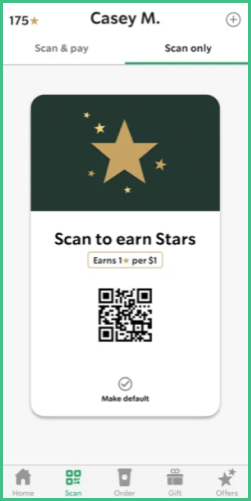
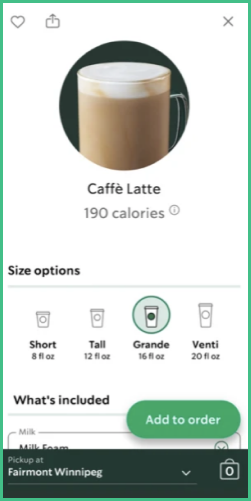
Gamification in life and business
Most people are convinced that gamification is just a good money-making machine. Nothing could be further from the truth!
As the above examples show, gamified content can be used in all aspects of our lives thanks to their effective and multifunctional mechanisms. Not only do they help us develop healthy habits, but they also support mental health, education, and the promotion of safe driving behaviours.
In other words - gamification techniques changes people for the better.
That's why we must not waste its potential.